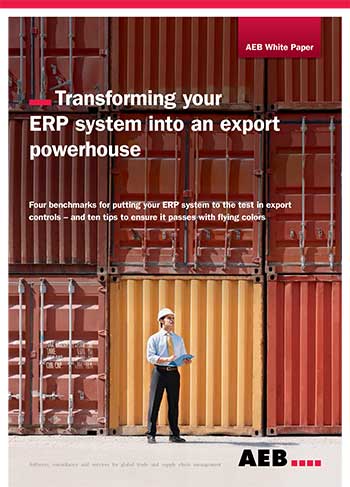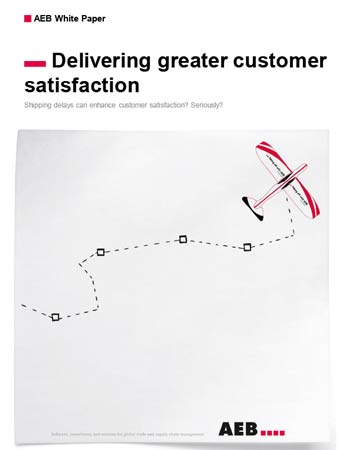Elastic Warehouse Part 5: The Future is Now.


Any logistics company setting its ten year business plan will inevitably look at how it believes consumer trends will change the way it needs to operate. There will be a whole series of questions that need to be explored:
Any logistics company setting its ten year business plan will inevitably look at how it believes consumer trends will change the way it needs to operate. There will be a whole series of questions that need to be explored:
- Will Click and Collect make up 20%, 50% or 80% of online orders in five years’ time?
- Will customers demand 24-hour or same day delivery?
- Will the majority of customers have online shopping passes which allows them to book a delivery slot at any time with their supermarket?
- Will drop boxes in smaller convenience stores, car parks and libraries be more widely adopted for less perishable or gift items?
These just scratch the surface of the many trends that may or may not take hold in the coming years. Answering these questions is not only hard but is likely to lead to more questions:
- How would we manage stock levels for more on demand shopping?
- What should the opening hours of the operation be?
- Do we need smaller lorries for more inner city driving? What’s the environmental impact?
But ultimately they will all come back to one central theme: what is the opportunity and what will it mean for our bottom line?
It’s likely that the answer will be one that leads to tremendous change in order to open up new market opportunity driven by a need to serve more customers, serve different customers, or even to serve customers differently.
The ten-year plan will also take into consideration the existing infrastructure and the demands that will be placed upon it. This will identify how much ‘stretch’ there is in the warehouse to cope with the demands that will be placed upon it.
Sadly for many companies it is at this point that the plan can be deemed too ambitious, unachievable and costly. However, this needn’t be the case if an Elastic Warehouse Strategy is adopted.
In essence an Elastic Warehouse virtually expands and contracts in line with demand and at a moment’s notice. It’s a versatile way of managing the assets you have to meet demand, with financial control.
There are four strategies to consider:
- Elastic Overheads – allows you to add and reduce resource on demand
- Elastic Outsource – whereby facilities elsewhere are used to take on the extra work during busy periods
- Elastic Tech – a wholly technology led solutions that makes your existing resource work harder
- Elastic Blend – a combination of the three solutions running concurrently.
For most companies the Elastic Tech solution is the best, as it offers the greatest flexibility and scalability. This solution replaces manual processes and paperwork with automatic data capture and mobile computing devices such as vehicle mounted computers and scanners with consoles integrated with an ERP/WMS system for real-time inventory management.
The operational design speeds up and improves the exchange and flow of information and decision-making, as well as fast tracks shipments from ‘goods-in’ through the warehouse and out to the final destination – a true endto-end supply chain. It’s the most effective way to release space as goods are moved through the facility far more quickly and efficiently. It also represents the best way to reduce errors that are especially costly both in SLA penalties and time, for example picking inaccuracies.
It’s estimated that 40-60% of warehouse operational costs are absorbed by picking, so many Elastic Tech solutions will focus on the technology designed to make picking easier, faster and more accurate. Handheld scanning devices through to voice activated solutions integrated with a warehouse management system can all add up to a very powerful way to make an operation more efficient, and in turn capable of managing more stock within the same warehouse footprint, with the same number of people and within the same working day.
This provides opportunity, be that bigger contracts, more complex contracts, or the ability to meet tougher SLAs that the shopper of tomorrow will demand. It also opens up the ability to diversify, freeing up time, or perhaps even space to do different types of food handling.
It’s clear to see that embarking on a strategy can bring great benefits. However, it is vital that the strategy is well planned out. This can be an enormous undertaking so it’s very worthwhile to work closely with a technology specialist, who can help you assess the ‘Elastic Gap’ in your model today and the one you will need in the future. A good partner will use this gap analysis to guide you to the solution that can maximise the opportunities you have today and leave the door open for managing the new opportunities of tomorrow.
They will not only help you identify how best to meet your strategic goals, but also introduce you to companies that have started on the Elastic Warehouse journey already. By exploiting their knowledge you will be able to identify how best to introduce new technology as part of a comprehensive and fully integrated architecture with as little disruption as possible.
Building an Elastic Warehouse can also be phased in line with the pace of change the company wants to set. Technology can be adopted in line with the most immediate opportunities and then scaled to suit the more ambitious plans. This brings flexibility and gives the organisation the ability to respond far more quickly. And as the warehouse starts to perform so companies can expect to see employee engagement improve, which in turn leads to productivity gains and a visible return on investment.
Building an Elastic Warehouse is an ambitious undertaking. However, it also allows ambitious strategies to be realised. The Elastic Warehouse really is the best way for any company to grow its customer base, open up new markets, and unlock new territories, while returning real value back to its shareholders.
Want more like this?
Want more like this?
Insight delivered to your inbox
Keep up to date with our free email. Hand picked whitepapers and posts from our blog, as well as exclusive videos and webinar invitations keep our Users one step ahead.
By clicking 'SIGN UP', you agree to our Terms of Use and Privacy Policy


By clicking 'SIGN UP', you agree to our Terms of Use and Privacy Policy
Other content you may be interested in
Categories

Want more like this?


Want more like this?
Insight delivered to your inbox
Keep up to date with our free email. Hand picked whitepapers and posts from our blog, as well as exclusive videos and webinar invitations keep our Users one step ahead.
By clicking 'SIGN UP', you agree to our Terms of Use and Privacy Policy









